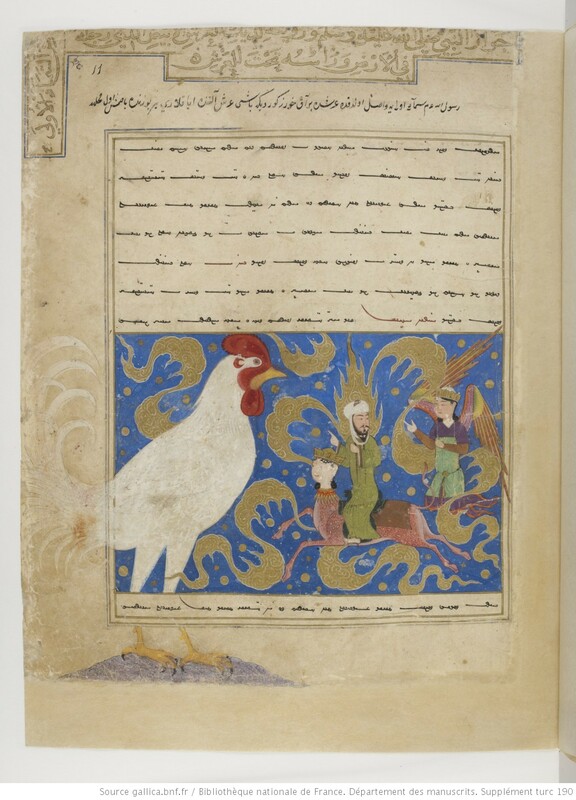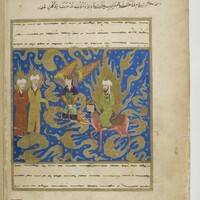Mi'rajnama (Book of the Ascension)
Type:
Illuminated manuscripts
Date:
1435–36
Location or Findspot (Modern-Day Country):
Afghanistan
Medium:
Paper
Dimensions:
34 × 25.5 cm
Description:
In 1435–36, the scribe Herou Melik Bakhsh (or Malik Bakhshi) of Herat produced this manuscript for one of Timur's sons, Shahrukh Mirza, ruler of the Timurid Empire between 1405 and 1447. It is written in a Turkish dialect (Chaghatay Turkish) with Uighur Turkish and Arabic scripts. The manuscript includes the Mi'rajnama or Miraj Nameh (Book of the Ascension). Its sixty-one illustrations show the angel Gabriel leading the Prophet Muhammad from Mecca to Jerusalem and then to the Seven Heavens and Hell.
The images are filled with visionary representations of heaven and hell, including Muhammad's vision of the angel with seventy heads. As in many of the visionary illustrations, the angel Gabriel gestures towards the wondrous apparition. Muhammad looks ahead, mounted on the back of a Buraq (derived from the Arabic for lightning; a creature that transports prophets). The iconography of the seventy-headed angel, and other illustrations in this manuscript, was likely inspired by East Asian Buddhist art.
The images are filled with visionary representations of heaven and hell, including Muhammad's vision of the angel with seventy heads. As in many of the visionary illustrations, the angel Gabriel gestures towards the wondrous apparition. Muhammad looks ahead, mounted on the back of a Buraq (derived from the Arabic for lightning; a creature that transports prophets). The iconography of the seventy-headed angel, and other illustrations in this manuscript, was likely inspired by East Asian Buddhist art.
Relevant Textbook Chapter(s):
9
Repository and Online Resources:
• Look through the manuscript on the website of the Bibliothèque nationale de France.
Tags:
Central Asian,
Islamic,
Islamicate,
Access to the sacred,
Animals,
Arabic,
Qur'an



